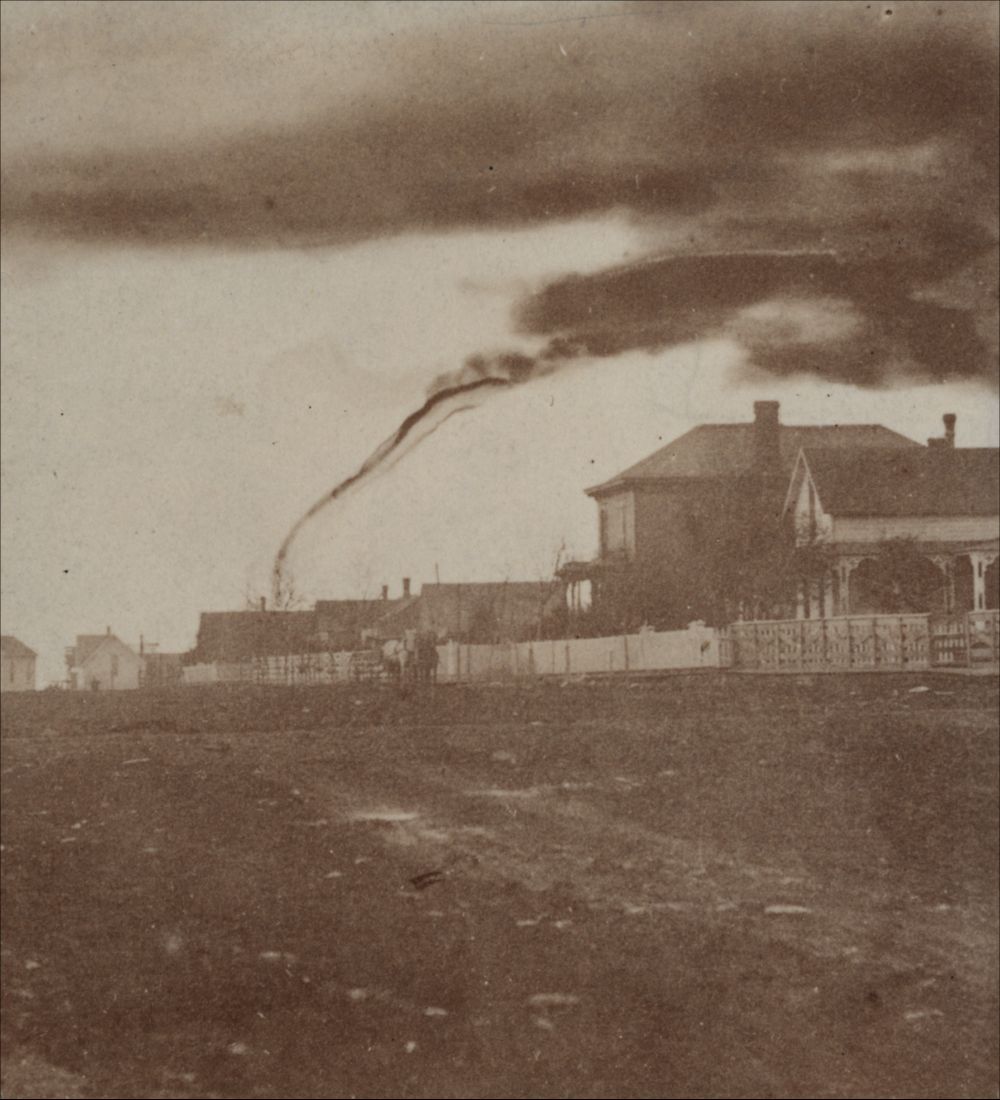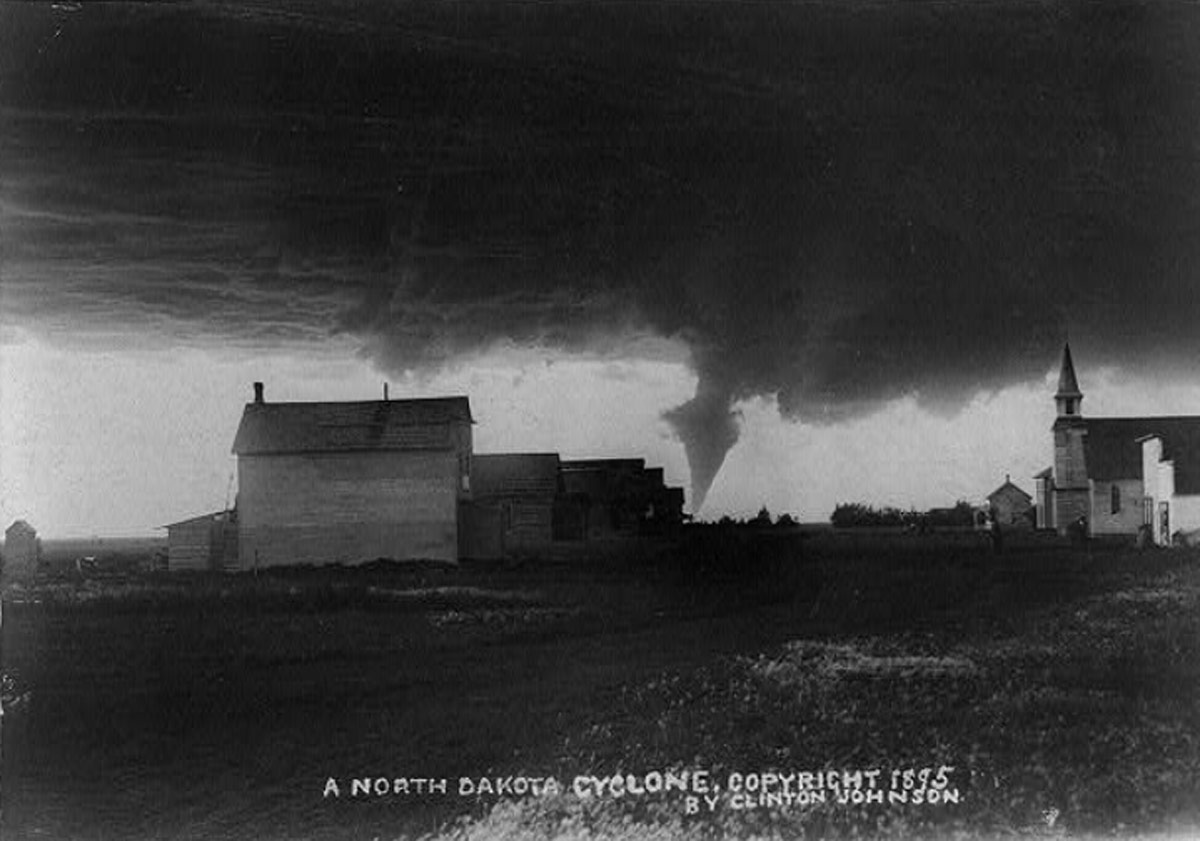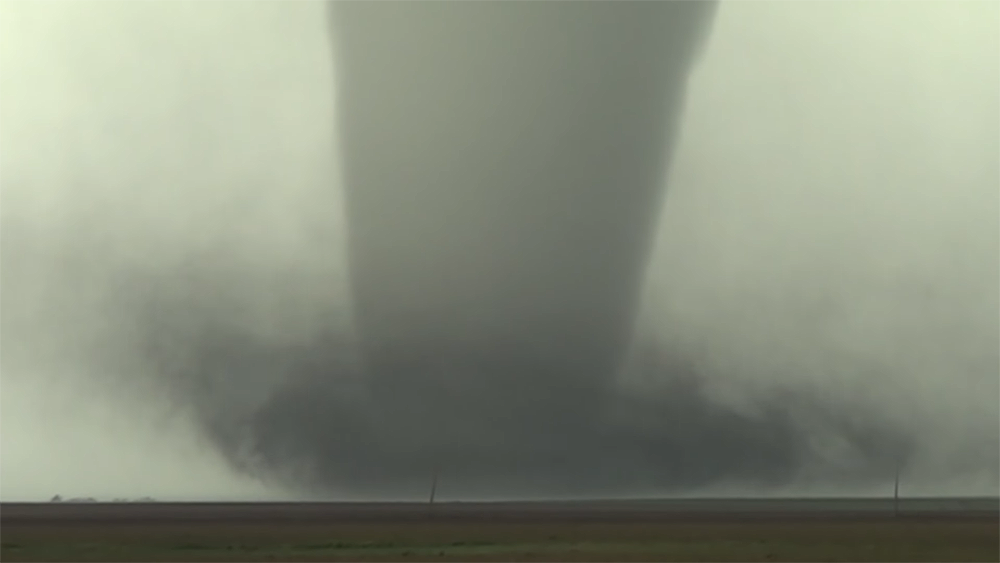
Tornado fascination and observation is nothing new. While these spinny winds are not unique to our country, they are very much a part of the American experience.
As soon as the mid-1800s, the government began collecting data on tornadoes. This was largely thanks to increased instances of tornado disasters given an expanding and westward moving population. The early American history of tornadoes is full of enthralling stories as well as peeks into the science of the time.
A guide to tornado watching appeared in a book entirely about tornadoes that was published before the turn of the 20th century, and we’ve reproduced it below. In addition to being an interesting read on its own, one can also compare it to queries sent by the Smithsonian Institution about 30 years prior to get a sense of where tornado thought was moving at the time.
Just keep in mind several of these observation methods are outdated today. Some, like #9 in particular, are dangerous…
Excerpt from, “The Tornado,” a Fact and Theory Paper, by H.A. Hazen, Assistant Professor of the United States Signal Office. New York, NDC Hodges, 1890.
INSTRUCTIONS FOR OBSERVING TORNADOES
IF any one thing has been emphasized in these pages, it has been the extreme need of more light on this whole question. The earlier investigators of the phenomenon were untrammelled, to a large extent, by preconceived opinions, and it must strike every one that few substantial facts unknown to them have been brought out since their time. It is to be hoped that the number of those willing to aid in establishing the facts and ferreting out the mysteries will be largely increased, and it is for such these instructions are given.
1. It is very essential that one divests himself of every preconceived notion about the whirling, sucking, or any other action of a tornado. There is the utmost danger of seeing the tornado do what we think it ought to do. It would be far safer, if one has an inclination to such views, to deny that such a view is correct, and only to accept it after most incontestable proof.
2. Note the time of day carefully, and specify whether the time used is Eastern, Central, Mountain, or some city time.
3. The side of the track on which the observer stood should be given,
4. Note the appearance of the clouds in the distance,— whether they roll upward, come together from the north and south,— or any other phenomenon connected with them.
5. Special note should be made of a cloud of dust and its general appearance.
[Offsite link: 19th-Century Storm Chasers Took the First Tornado Photographs]
6. See whether the funnel-cloud is visible at a distance, or suddenly breaks into view on the approach of the tornado. If possible, locate the first appearance of the funnel by a tree, house, or object close by, and, after the tornado has passed, measure the distance from the observer’s position to that of the tornado when first seen.
7. If the observer is a thousand feet or more away from the funnel, or cannot see distinctly trees or objects in it or near it, he should not try to make detailed observations of the whirl, or any thing else at the tornado. Fix the attention on the motion of detached clouds. Make every effort, by comparison with trees and houses between the tornado and the observer, to get its height, width, and speed: these can be much better found out at a little distance than close to the cloud.
8. Make careful observations of all electric displays, the appearance of balls of fire, the sound of thunder, the roar of the tornado, etc.
9. If the observer is within a hundred feet of the tornado on the north side, he need have no fear, and may carefully examine all objects flying just above the ground. He should note carefully the foot, the middle, and the top of the funnel, to see whether any tree or object is carried to his right as he faces the funnel.

10. Note also whether any object is carried up straight in the funnel, or whether it is borne along in the swift wind. If there is an uprush in the tornado, it ought to be easily told; and the appearance will be very different from that if the object or house is borne along by the wind, and afterward inclined upward. If there is a sort of explosive effect, the upward motion will be more or less jerky, and not steady as in a stream. On the whole, the evidence seems to show something like an uprush, though it seems conclusive that this is not due to a vacuum in the tornado, as many think. It is very plain that nothing can be sucked into the tornado, because of a partial vacuum there; but if it rushes in or up, it must be borne or propelled by a stream of electricity, so to speak, or by a rush of air. One of the best illustrations of this has just come to hand from the storm at Bradshaw, Neb. This tornado passed over a tank ten feet long, three feet wide, and twenty inches deep, full of water. This tank was air-tight, and had an opening in the top one foot square. The observer reports that the tornado sucked all the water out of this tank. A moment’s reflection will show that this could have been done only by the insertion of the funnel into the opening one foot square. Of course this is absurd, and we must resort to some other explanation of the phenomenon.
11. After the tornado has passed, note the appearance of the houses for explosive effects.
12. Pay particular attention to the direction of the trees, making a separate observation on the south side, in the centre, and on the north side. See if any debris or objects have been carried in any case toward the west or south-west on the north side of the track, and measure the distance.
13. A note should be made of the width of the greatest destruction, not including houses unroofed on the borders; also the length of the path where it was most destructive, and the distance from the point at which it first struck the earth to the point at which it left the earth during the time of the greatest destruction.
14. Give the names of persons killed, if any.
15. Give an estimate of the loss to buildings, also specifying the number of buildings destroyed and their characters as to strength, etc.
16. A note should be made of the rainfall,— whether it was most abundant before, during, or after the tornado; also, if possible, the amount of rain at the centre of the track and at some point two thousand or three thousand feet on either side.
17. Careful note should be made of hail, size of stones, width of track, situation with respect to the main track, etc.
18. After the tornado the direction of the path should be most carefully determined.
19. All evidences of corks flying from bottles should be carefully looked for.
20. If one has a barograph, its record will be of the utmost value. If one has a barometer, an observation should be made by some one every minute till the tornado has passed. If the barometer is an aneroid, the face should be gently tapped before each observation. A steady watch of the needle may show any sudden fluctuation too rapid to be caught by reading the barometer. This instrument may be read in a dug-out or a cellar as well as in a house. Of course, every one will keep eyes and ears open for any and all phenomena to be noted in this remarkable outburst.
Latest posts by Ian Livingston (see all)
- Busy March for twisters to end with another multi-day event - March 28, 2025
- Everything but locusts: NWS shines in apocalyptic weather - March 17, 2025
- Top tornado videos of 2023 - January 1, 2024

Hazen stood in the way of JP Finley, arguing that much tornado damage was attributable to electricity, not wind. Finley had it figured out but lost out in a power play.
I am impressed! I always liked hearin bout 1800s tornadoes. I would prefer pre civil war era though